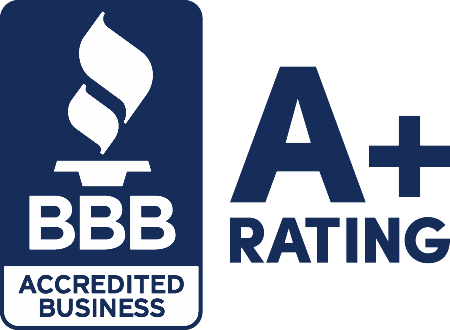What does it mean to Work From Home?
Working from home, often abbreviated WFH, is a term used to describe employees who are part of an organization but perform their job duties away from the office or primary business location. Let’s explore some of the different types of remote work. While many of these terms are used interchangeably, there are slight differences between them.
Work From Home (WFH): Working from home refers to carrying out work tasks and responsibilities from a residential location, such as a home office or designated workspace. This arrangement allows employees to avoid commuting to a traditional office and complete their work remotely using technology and communication tools.
Remote Work: While remote work mainly refers to WFH, the critical difference is that remote employees can work from any location. For example, a WFH employee might have a VPN or other remote access they can only utilize in a designated location, usually their primary residence. Remote workers can travel to different locations and maintain the same level of access. This flexibility can boost productivity for remote workers, as they can create a comfortable and personalized work environment.
Telecommuting: Telecommuting offers the benefit of avoiding long commutes to the office, saving time, and reducing stress. For many, this freedom from commuting leads to better work-life balance, allowing them to allocate more time to personal activities or hobbies. The critical differences between telecommuting and remote work are that employees are typically in the same region as the business, may have occasional onsite days, and generally use more communication tools like video conferencing for collaboration.
Hybrid Work Models: Hybrid work models are flexible working arrangements that combine remote and in-office work. This approach allows employees to work from home while maintaining face-to-face collaboration opportunities at the office. It also allows companies to downsize their physical office space, potentially reducing overhead costs. It combines all the benefits of both models.
Why is Working From Home more common now?
Remote work offers various benefits for employees and employers. One of the most significant changes in recent years was the massive increase in WFH during the COVID-19 Pandemic.
Benefits for Employees
Many employees choose to work from home due to the convenience it offers. It allows workers to manage family obligations while still being productive. Reducing commute time provides extra hours for personal activities or work-related tasks at home.
Benefits for Employers
Employers offering remote options attract talent seeking autonomy and a better work-life balance. It also allows employers to select from a larger talent pool since they’re not restricted to employees within commuting distance. In addition, remote work can increase job satisfaction as employees appreciate its flexibility.
What are the benefits and drawbacks of Remote Work?
Here are the most reported advantages and disadvantages of WFH.
Remote Work Benefits
Remote work offers flexibility, allowing employees to balance their work and personal lives better. Employees can avoid long commutes, saving time and reducing stress.
Many remote workers report higher productivity levels due to fewer distractions than traditional office settings. The flexibility of remote work often leads to increased job satisfaction among employees.
Here are some of the ways employees save money when working remotely:
- Reduced commuting expenses like gas, public transportation, and parking fees.
- Lower costs for attire.
- Save money on lunches by preparing food at home.
- Reduced distractions can increase overall productivity and performance.
Remote Work Drawbacks
However, remote work can lead to feelings of isolation as employees miss out on in-person interactions with colleagues. Collaborative projects may suffer due to the lack of face-to-face communication, impacting teamwork and creativity.
While WFH helps employees with saving money in some areas, it can also increase some expenses. Examples include:
- Higher utility bills, especially for electricity and high-speed internet.
- Home office expenses, like investing in ergonomic furniture, lighting, and office supplies for a suitable workspace at home.
- Creating an ideal work environment at home could also involve costs for decorations or renovations to enhance productivity.
- Remote workers may need to purchase software licenses or hardware equipment such as laptops, monitors, or printers.
Remote Work Pros & Cons
Pros:
- Flexible work schedule.
- No commuting time or costs.
- Ability to work from anywhere.
- Increased autonomy and independence.
- Potential for better work-life balance.
Cons:
- Feelings of isolation and lack of social interaction.
- Difficulty in separating work and personal life.
- Communication challenges with colleagues and managers.
- Potential for distractions at home and higher food costs.
- Limited access to resources and support from the office.
What are the benefits and drawbacks of In-Office Work?
Here are the advantages and disadvantages of in-office work.
In-Office Benefits
In-office work offers numerous benefits, including face-to-face collaboration and communication with colleagues. Being in the office allows for spontaneous brainstorming sessions and quick decision-making, which can lead to increased productivity and innovation.
Additionally, working in the office can help employees establish a stronger sense of camaraderie and teamwork, leading to a more cohesive and supportive work environment. In-office work also provides a clear boundary between work and home life.
In-Office Drawbacks
One of the drawbacks of in-office work is the lack of flexibility. Employees must be present in the office during specific hours, which can be challenging for those with family or personal commitments.
This lack of flexibility can also increase stress and difficulty in maintaining a work-life balance. Additionally, commuting to and from the office can be time-consuming and tiring, impacting overall well-being and productivity.
In-Office Pros & Cons
Pros:
- Opportunities for face-to-face collaboration.
- Access to office resources and equipment.
- Structured work environment.
- Clear boundaries between work and home life.
Cons:
- Commute time and cost.
- Distractions and interruptions from coworkers.
- Limited flexibility in work hours.
- Potential for office politics and conflicts.
How do the Costs of Working from Home vs In-Office Compare?
Let’s compare the work-related expenses between remote work and traditional in-office setups.
Commuting Expenses: Remote workers save money on commuting costs such as gas, public transportation fares, and vehicle maintenance. In contrast, employees working in an office setting have to allocate funds for daily commuting expenses.
Office-Related Costs: Remote work eliminates the need for spending on professional attire, lunches out, and other incidental office-related expenses. On the other hand, employees working in a traditional office environment often incur costs related to maintaining a professional appearance and purchasing meals during work hours.
Productivity and Flexibility: Remote jobs offer increased productivity due to reduced distractions and a more comfortable working environment. Telecommuting provides flexibility in managing one’s schedule and work-life balance.
Hybrid Work Models: Estimates indicate that companies can save on renting office space by adopting hybrid work models that combine remote and in-office schedules. Embracing this approach allows businesses to reduce overhead expenses for maintaining a large physical office space.
Frequently Asked Questions
Here are the most common questions about the costs of working from home vs in-office.
Does Working from Home reduce the Business’s Expenses?
Remote work significantly reduces business expenses by reducing office space and utility costs. Many business owners find that employing remote workers leads to savings on commuting subsidies, office supplies, and other overhead expenses.
What’s the impact on workers’ expenses when Returning to the Office?
While remote work increased significantly during the pandemic, many employers now require employees to return to the office. Here are some cost considerations for remote workers going back to an onsite business.
Increased Commuting Costs: Returning to the office may increase commuting costs for many employees. This could include gas, public transportation, parking fees, and vehicle maintenance expenses.
Higher Expenses for Remote Workers: Remote workers transitioning back to a traditional office setting might experience higher expenses. They could face costs related to professional attire, daily meals, and potentially childcare or pet care services.
Consideration of Impact on Productivity and Satisfaction: Employers should consider the impact of additional costs on workers’ productivity and satisfaction. Understanding these financial implications can help businesses make informed decisions regarding remote work policies and benefits.
How do I budget for Working from Home vs Working in an Office?
Budgeting for Remote Work: Working from home may involve expenses like high-speed internet, office furniture, and increased utility bills. Conversely, office work requires commuting costs, professional attire, and daily meals.
Managing Expenses in a Hybrid Work Environment: Employees split their time between the office and remote locations in a hybrid work setup. This arrangement demands financial planning for both home office setups and commuting costs to the workplace.
Balancing Costs and Productivity for Remote Workers: Remote workers must balance cost-saving measures with productivity. While cutting down on certain expenses is advantageous, it’s crucial not to compromise work efficiency due to inadequate resources or distractions at home.
Can I deduct Home Office expenses on my taxes?
It may be possible to deduct some home office expenses on your taxes if you meet specific criteria set by the IRS. Be sure to consult with a tax professional for personalized advice based on your specific situation.
The Cost of Working from Home vs In-Office – Final Thoughts
As a small business owner, it’s essential to carefully consider the cost of a remote workforce versus in the office. Your decision should align with your business goals and financial priorities. Use this opportunity to reassess your business needs and make an informed decision that suits your budget and growth plans.
As you navigate this decision, remember that every penny saved contributes to the success of your business. Take charge of your work environment and create a space where you and your team can thrive professionally while maintaining a healthy work-life balance. Remember, it’s not just about the dollars; it’s about creating a conducive work environment that supports your business growth.
Contact us if you have more questions about WFH vs in-office costs or to apply for a small business loan. Our alternative funding experts can help you find the best financing options for your business goals.






















